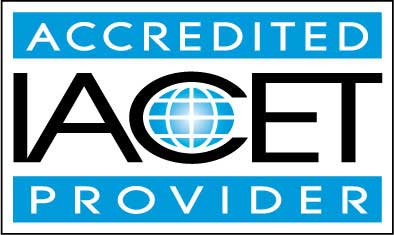Course Description
The 20th century bore witness to some of the most transformative events in American history. Among these, the New Deal's Fair Labor Standards Act (FLSA) of 1938 stands as a beacon of hope and a testament to the nation's commitment to social justice and workers' rights. Enacted under the visionary leadership of President Franklin D. Roosevelt, the FLSA wasn't just another piece of legislation; it was a revolution, a societal shift that sought to right the wrongs meted out to America's labor force during the trying times of the Great Depression.
This groundbreaking legislation has left an indelible mark on the fabric of American society. The establishment of the minimum wage under the FLSA wasn't merely about assigning a monetary value to an hour's labor. It recognized the inherent dignity of work and ensured that every American could expect a fair wage for a fair day's work, thus laying the foundation for the modern-day living wage movement.
Furthermore, the act's introduction of overtime pay not only sculpted the 40-hour workweek framework but also redefined work-life balance, a concept previously overshadowed by exploitative work hours.
Perhaps most poignantly, the act brought an end to the dark days of child labor, a grim era where innocence was traded for productivity in the gloomy confines of factories.
This course doesn't just recount historical facts; it takes you on a riveting journey through the corridors of power, struggle, and change. Delve deep into the intricacies of the FLSA, explore the vigilant guardianship of the Department of Labor, and understand the intricate tapestry of labor laws that shape the modern workplace.
Are you ready to immerse yourself in a narrative that spans the highs and lows of the American labor movement, a story where hope triumphs over despair, where the future is forged by understanding the past? Enroll now and become part of the dialogue on the evolution and future of workers' rights.
- Completely Online
- Self-Paced
- Printable Lessons
- Full HD Video

- 6 Months to Complete
- 24/7 Availability
- Start Anytime
- PC & Mac Compatible
- Android & iOS Friendly
- Accredited CEUs

Learning Outcomes
- Define key labor protections provided by the Fair Labor Standards Act, focusing on minimum wage, overtime pay, record-keeping, and child labor regulations.
- Identify significant amendments to the FLSA that have expanded its scope and assess their impact on diverse industries and worker categories.
- Define the key components of the Fair Labor Standards Act (FLSA) and describe their significance in upholding workers' rights in the United States.
- Identify and compare the roles of at least three specialized divisions within the Department of Labor (DOL) in enforcing labor laws and promoting workplace safety and fairness.
- Define the dual nature of the Fair Labor Standards Act (FLSA) by analyzing the letter and spirit of the law and its historical context.
- Describe the key principles of the FLSA, including minimum wage, workweek limitations, record keeping, and child labor restrictions, and evaluate their impact on modern labor markets.
- Define 'prompt payment' as interpreted by courts under the FLSA to demonstrate understanding of timely wage disbursement.
- Identify state-specific variations in payment schedules and explain how compliance with these aligns with FLSA requirements.
- Analyze the economic arguments for and against minimum wage increases, demonstrating understanding through examples of their impact on poverty and employment.
- Define the historical context and legislative origins of the minimum wage by identifying key events and figures, such as the Fair Labor Standards Act of 1938.
- Analyze the key provisions of the Fair Labor Standards Act (FLSA) and evaluate their effectiveness in mitigating modern child labor practices.
- Identify and describe the historical factors that contributed to the practice of child labor during the Industrial Revolution.
- Define the term 'regular rate of pay' under the FLSA by identifying required components such as basic wage, bonuses, and allowances.
- Demonstrate mastery of lesson content at levels of 70% or higher.
Assessment Guide
| Assessment | Points |
|---|---|
| Why this Course? | 1 points |
| Lesson 1 Review Exam | 20 points |
| Lesson 2 Activity | 1 points |
| Lesson 2 Review Exam | 20 points |
| Lesson 3 Review Exam | 20 points |
| Lesson 4 Activity | 1 points |
| Lesson 4 Review Exam | 20 points |
| Lesson 5 Activity | 1 points |
| Lesson 5 Review Exam | 20 points |
| Lesson 6 Activity | 1 points |
| Lesson 6 Review Exam | 17 points |
| Lesson 7 Quiz | 10 points |
| Lesson 7 Review Exam | 20 points |
| Lesson 8 Quiz | 10 points |
| Lesson 8 Review Exam | 20 points |
| Lesson 9 Quiz | 10 points |
| Lesson 9 Review Exam | 20 points |
| Lesson 10 Activity | 1 points |
| Lesson 10 Quiz | 10 points |
| Lesson 10 Review Exam | 20 points |
| Lesson 11 Quiz | 10 points |
| Lesson 11 Review Exam | 19 points |
| Lesson 12 Quiz | 10 points |
| Lesson 12 Review Exam | 20 points |
| Lesson 13 Activity | 1 points |
| Lesson 13 Quiz | 10 points |
| Lesson 13 Review Exam | 20 points |
| Lesson 14 Quiz | 10 points |
| Lesson 14 Review Exam | 12 points |
| Lesson 15 Quiz | 9 points |
| The Final Exam | 75 points |
| Lesson 15 Review Exam | 20 points |


